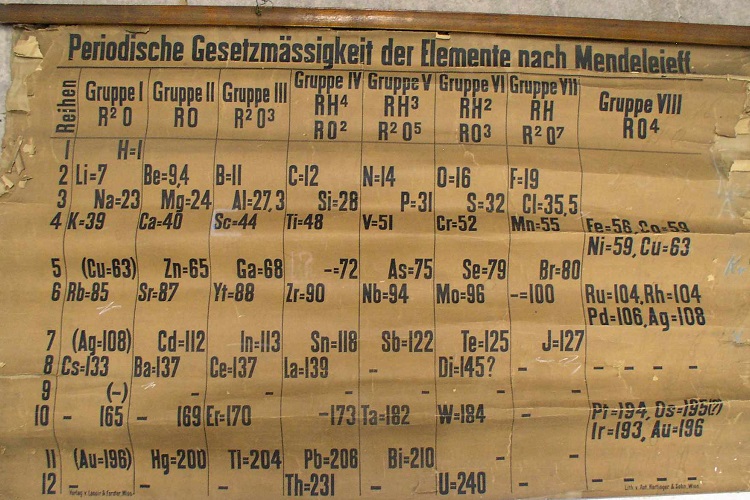World’s Oldest Periodic Table Poster Turns Up in Scottish Storeroom

The periodic table of elements is a familiar sight to anyone who's ever sat in a chemistry classroom — and apparently, that's been the case for nearly 150 years.
Conservators at the University of St. Andrews in Scotland announced the discovery of what they say is the world's oldest surviving example of a classroom periodic table of elements, dating to 1885.
The old classroom poster, printed in German on linen-backed paper, was discovered in 2014 while staffers from the university's School of Chemistry were cleaning out their storage room, according to a news release from the university. Among the clutter of decades-old lab equipment and chemical vials, staffers found an old cache of huge, rolled-up teaching charts.
One of the scrolls contained the aforementioned periodic table — inked onto paper so old that it started to crumble at the touch.
School records showed that the chart was purchased in Vienna by a St. Andrews chemistry professor in 1888, and the table likely hung in his classroom until his 1909 retirement. Researchers were able to further narrow down the poster's print date by looking at the elements represented (and those left out) on the chart. For example, "both gallium and scandium, discovered in 1875 and 1879, respectively, are present, while germanium, discovered in 1886, is not," the news release said.
According to the university, this table seems to be the only one from its period surviving anywhere in Europe.
In any case, the old chart dates closely to the conception of the periodic table, itself. Russian chemist Dmitri Mendeleev developed the world's first periodic table when, following days of work and a vivid dream, he ordered the known elements according to their atomic mass and ability to bond with other elements. Mendeleev presented his findings to the Russian Chemical Society in 1869, and the first periodic tables were published soon after.
Sign up for the Live Science daily newsletter now
Get the world’s most fascinating discoveries delivered straight to your inbox.
According to professor David O'Hagan, former head of chemistry at the University of St Andrews, the "remarkable" table will be available for research at the university and will go on public display later this year.
"We have a number of events planned in 2019, which has been designated [the] international year of the periodic table by the United Nations, to coincide with the 150th anniversary of the table's creation by Dmitri Mendeleev," O'Hagan said in the statement.
- Nature Under Glass: Gallery of Victorian Microscope Slides
- In Images: Ancient Maps and Sea Monsters
- Image Gallery: Ancient Middle-Eastern Texts
Originally published on Live Science.

Brandon is the space/physics editor at Live Science. His writing has appeared in The Washington Post, Reader's Digest, CBS.com, the Richard Dawkins Foundation website and other outlets. He holds a bachelor's degree in creative writing from the University of Arizona, with minors in journalism and media arts. He enjoys writing most about space, geoscience and the mysteries of the universe.









